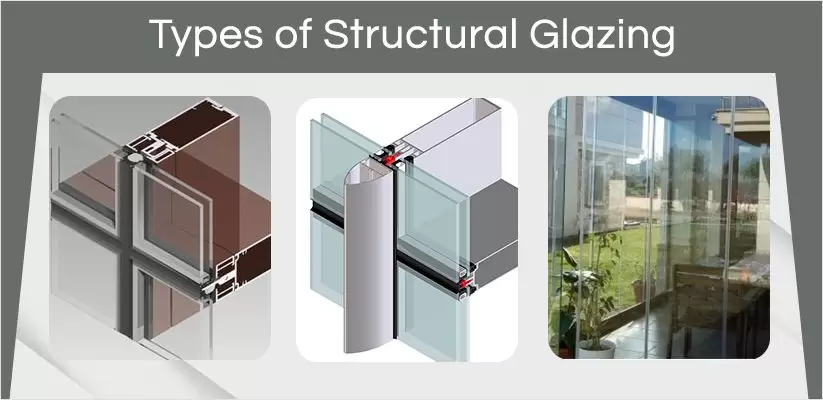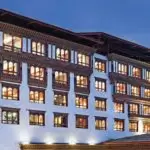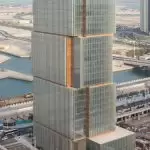A structural glazing system is a mechanism for connecting speciality glass to an aluminium frame using silicone sealants. While technically any form of glass may be used in structural glazing, the type should be carefully chosen, considering factors like energy saving and eventual interior décor. The aluminium frames used must, of course, be of exceptional strength, while the silicone sealants used should be high-performance sealants that are capable of protecting the structure against air, dust, moisture, and heat. Structural glass can be used in some architecturally inventive and aesthetically appealing ways in residential houses. They are also a natural method to provide room and natural light without the need for frames or limiting structural options.
Post your Requirement
Structural Glazing forms a very important part of facade design. Over the years it has evolved and it has been very challenging to find good structural glazing solutions.
Why Would You Choose A Structural Glazing System?
In comparison to traditional captured systems, structurally glazed systems provide more transparency. Due to the lack of metal on the surface, there are fewer visible disruptions, resulting in a smooth, continuous glass appearance.
Pressure plates and caps on traditional captured curtain wall systems can conduct large amounts of heat into or out of the façade, depending on the season, while there is minimal thermal bridging with structural glass since there is little to no visible outside metal, reducing energy consumption expenses. Structural glazing has the greatest impact on large, commercial buildings, but it also has a variety of other uses, such as glass entrances, skylights, canopies, and elevator enclosures.
Different Types of Structural Glazing Systems
Structural glazing is a critical component of the facade design. It has developed through time, and finding effective structural glazing solutions has been quite difficult. The following are different types of structural glazing systems:
- Four-Sided Framed Glazing
- Two-Sided Framed Glazing
- Frameless Glazing System
- Unitised Curtain Wall System
- Stick Glazing
- Fin Supported Glazing
- Tension Systems
1. Four-Sided Framed Glazing:
In four-sided framed glazing, a frame is fabricated on all four sides of the glass to support it. During installation, the horizontal and vertical support members are framed on the building. Glass is used as a transparent infill panel.
Advantages of Four-Sided Framed Glazing
- The frame supports all four sides, providing better load distribution and stability.
- Ensures better sealing against wind, rain, and dust infiltration.
- Stronger framing enhances protection against break-ins and external impacts.
- Reduces heat loss and noise penetration for improved comfort.
2. Two-Sided Framed Glazing:
In a two-sided framed glazing, the glass support is only on two sides. It is either fabricated in the horizontal or vertical direction. The glass is then fixed in the mullions.
Advantages of Two-Sided Framed Glazing
- Provides enhanced stability and support, reducing deflection under wind loads.
- Requires fewer framing materials compared to fully framed systems.
- Offers a sleek, modern look with a balance between framed and frameless sections.
- Maximises natural light while maintaining structural integrity.
3. Frameless Glazing System
This frameless glazing system is made up of sliding folding panels that travel over a specific surface without the use of bearings. The whole system’s weight is transferred to the bottom track. These are quickly noticeable and may truly take a property’s appearance to the next level.
Advantages of Frameless Glazing
- Produces a minimalistic look that allows light to enter the structure
- These are low-maintenance and cost-effective materials
- Provide a seamless aesthetic and functional relationship between the inside and outside of a structure.
4. Unitised Curtain Wall System
A unitized curtain-wall system is made up of big modules that are pre-assembled, joined, and glazed in vertical and horizontal modules to form a full system. They are semi-arranged which makes the installation quite easy. Thermal efficiency, sound transmission, and fire safety are essential performance objectives of the unitised curtain-walling system.
Advantages of the Unitised Curtain Wall System
- The construction pace is great since all of the panels are pre-assembled.
- This system is more reliable and manageable.
- They neither corrode nor deteriorate as compared to other building materials.
5. Stick Glazing
In Stick Glazing, glass panels are installed with frames using pressure plates and gaskets. These glazing systems are adaptable, allowing alternative ways, such as sliding windows and sliding doors, to be included. Because they are not dependent on having a huge factory, they are less specialised.
Advantages of Stick Glazing
- A wide range of system options is available at extremely affordable rates and with quick lead-in periods.
- It is appropriate for angular or complicated facades.
- Sightlines are smaller in this arrangement, making it look good with all kinds of frames.
6. Fin Supported Glazing
Vertical glass sheets known as glass fins are utilized to reinforce the glass facade. The glass sheet is installed perpendicular to the building’s face. Special fasteners and silicone sealant are used to secure it to the structure. The sealants used in structural glazing are quite robust, long-lasting, and UV-resistant.
Advantages OF Fin Support Glazing
- Improve the amount of natural light in interiors while improving façade visibility.
- They look stylish and versatile in all kinds of frames.
- These systems are highly customizable, so they can be altered to any size.
7. Tension systems
In a tension system, high-tensile cables or stainless steel rods are used to impose the facade’s stresses on the main structure. As a result, the amount of solid structural parts visible on the project is reduced, boosting the facade’s transparency. They offer an unobscured view from indoors as well as outdoors.
Advantages OF Tension System:
- Maintain very clear sightlines from both inside and outside.
- It can be geometrically structured in different shapes.
- Provide a unique and eccentric aesthetic to the building which catches the attention.
Benefits of Structural Glazing Systems
Structural glazing systems are a popular choice for modern buildings and diverse applications in the architectural industry due to the wide range of remarkable benefits of the structures. One of the key advantages of the structural glazing system is that it can ensure security and efficacy even in the most challenging locations that were previously unsuitable for glass installation. It can also ensure strength and sturdiness even in regions that are prone to earthquakes or are prone to damage due to the different reasons.
- Flow of Natural Light: The structural glazing ensures the installation of large panels of glass that ensure an unobstructed view of the outside with an enhanced flow of natural light. The use of strong and reliable structural glazing options ensures a sense of positivity indoors with high security. This also leads to positive effects on the health, productivity, and performance of the occupants. This reduces the need for artificial lighting fixtures and creates a brighter and open indoor environment.
- Insulation Properties: With the advancements in technology and innovations, there have been developments of new and improved glass options that ensure features like energy efficiency, sound insulation, and the ability to sustain a comfortable and cosy environment indoors with a productive feel. The silicon is used to connect glass panels, and the double and triple glazing options can further add to the thermal comfort of the structures. This can help you reduce the heating or cooling costs for the occupants.
- Architectural Versatility: The structural glazing options help to create a sleek, modern, and seamless look that helps to elevate the grace of the most creative and futuristic architectural designs. They add a design flair to the structures, and the versatility of the load-bearing glass options can further widen the possibilities for the development of massive and unique structures. This makes the structure a great choice for applications ranging from commercial buildings, corporate offices, malls, airports, hotels, and numerous other projects.
- Structural Strength: The structural glazing options include the use of high-strength silicone adhesives along with toughened or Low-E glass options for enhanced durability in structures. These glass options are built with a strong ability to withstand the load of high winds, seismic movements, and the pressure of external impacts. The structural support provided by the structural glazing options ensures the creation of a strong barrier that can withstand diverse conditions.
- Increased Property Value: You can build your structures with excellence and elegance with the structural glazing systems. You can further go for various framing materials, including aluminum and steel, and customize elements with tinted, reflective, or frosted glass and build a look that captivates every eye it meets. This premium look and feel enhances the marketability of the structures and makes them an attractive choice for buyers or tenants.
Go for a Reliable Structural Glazing Option for An Elegant Appeal
Structural glazing is a cutting-edge solution that has made its place in the architectural industry of the country with its unmatched standards of visual appeal, energy efficiency, and durability and in giving a rich and professional look to the buildings. Whether you go for four-sided framed glazing or the frameless ones, each is designed to meet the specific needs of the people and elevate the design and performance of diverse industries.
FAQ’s
Q:1 What are the different types of glazing?
A:1 The glazing systems are primarily of three main types, single glazing, double glazing or triple glazing. The single glazing is affordable and simple but the double and triple glazing are superior at insulation and security. There are additional options such as laminated, tempered, low-E, obscure, tinted, and mirrored glass that come with their own features and security standards.
Q:2 What is the standard size of structural glazing?
A:2 When it comes to structural glazing for diverse purposes, the thickness of the glass typically ranges from 6mm to 24mm, with 6.4mm (laminated) and 7mm (fire-rated) being popular options for internal applications.
Q:3 What is the application of structural glazing?
A:3 Structural glazing is an innovative method where the large glass panels are directly attached to the structure of the building without the use of traditional frames. Structural glazing is used in various applications ranging from the creation of frameless glass walls, transparent elevators to glass doors, roofs, floors, and others where a seamless look with an abundant flow of natural light is expected.























Post A Comment